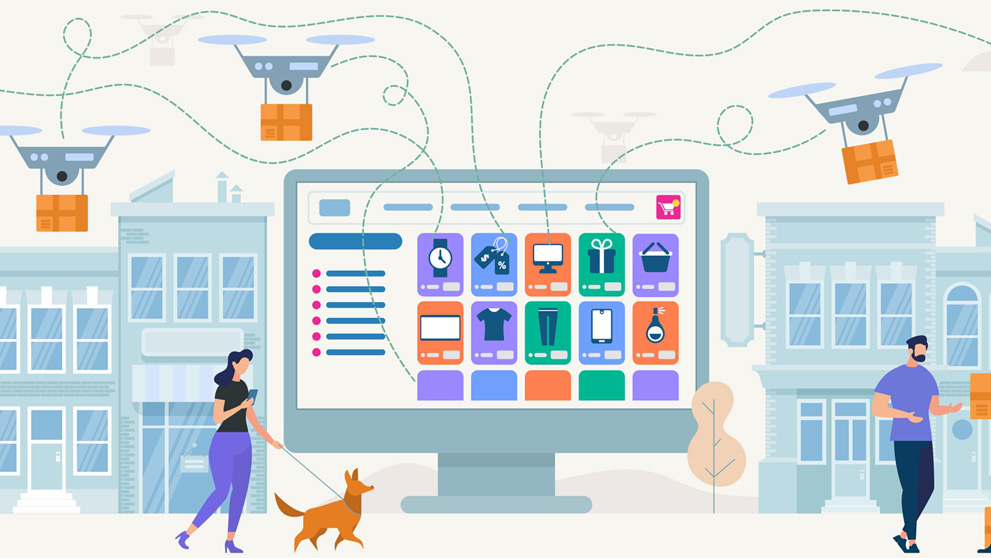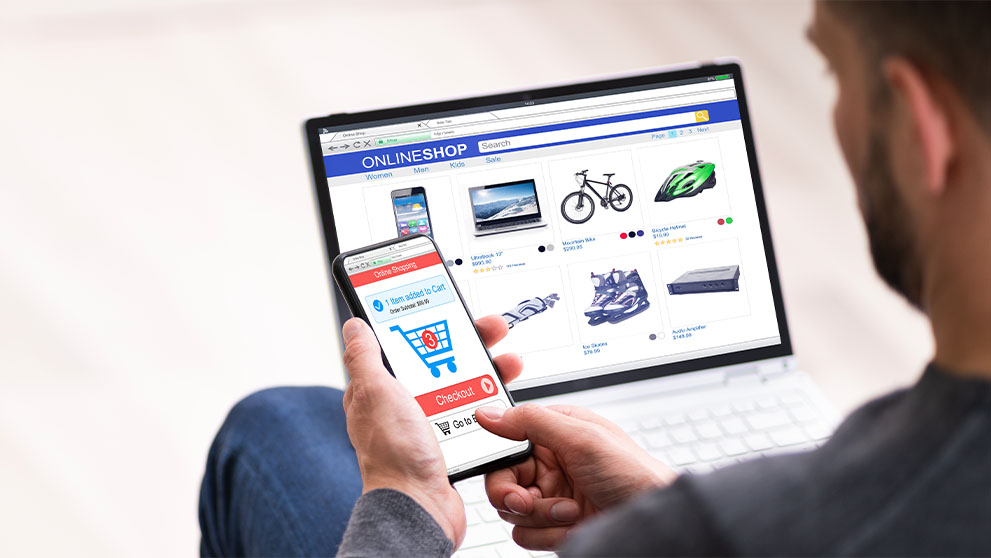Across the world, e-commerce is booming, which means there has never been a better time to be an online seller. All you need is ambition and to follow these 22 golden rules of e-commerce to ensure your business is a success. Happy selling!
1. Make your sure page loads fast
Don’t fall at the first hurdle! In our “on demand” world, people expect things right away. Ensure your e-commerce website loads quickly, otherwise impatient visitors will move on.
2. Hook them on the home page
Remember, first impressions count. Your home page should be welcoming and clearly communicate your brand proposition. But don’t overdo it – a cluttered page will overwhelm customers who won’t know where to begin. Prioritize an easily found search bar and photos of some of your best-selling products to hook customers in. Oh, and keep annoying pop-ups to a minimum.
3. Make navigation simple and intuitive
A powerful search bar and menu are both important to help customers find what they’re looking for as quickly as possible. Let customers filter their results too, by price, color, size etc. With time and machine learning, your site will be able to offer more accurate, relevant results.
4. Offer real-time customer service
Integrating a live chat feature onto your e-commerce platform means you can answer customer questions and make product suggestions instantly – which means more chance of a sale.
5. Utilize customer data
This is your golden ticket to building a better user experience across your e-commerce channels. You can see how your customers shop – what they spend time looking at, what pages they leave quickly, where cart abandonment happens the most. From here, you can improve your weak spots.
6. It’s all in the details
Show customers what your products are really like with lots of high-quality photos and detailed specifications. You can even include video guides to show the product in action if it’s particularly complex to use.
7. Include user reviews
Consumers tend to be more trusting of real customers’ reviews, so share lots on your website.
8. Be personal
Personalization is becoming increasingly important to delivering a positive customer experience. Send customers product recommendations based on their previous browsing history, address them by name in all marketing communications, and include a thank-you note with each order (bonus points if it’s handwritten!) You could even send them a special discount code on their birthday. Look at the customer data available to you and get creative!
9. Cross-sell
So, a customer on your website has just added a dress to their shopping cart. Why not suggest a matching headband? Or how about that device that will need batteries – give customers a nudge to add them to their cart. Think about every product on your website and which complimentary items you can cross-sell at the point of sale. Create product bundles and “buy one get one half price” deals to incentivize purchases, too.
10. Stay secure
Cybercrime is a big concern for online shoppers, so be open about your customer privacy policy and display your SSL certificate symbol clearly.
11. Remember mobile…
Chances are, a large portion of your customers will be browsing your site on mobile, so ensure it’s optimized for the small screen. Even better, invest in a dedicated mobile app for your brand. Shoppers will be incentivized to browse for longer and add more to their carts – in fact, conversion rates through mobile apps are 130% higher compared to mobile-first websites1. It’s a no-brainer, right?
…and every other sales channel
Beyond mobile, there are several other places your business should be present to reach customers – including social media. Our guide to omnichannel retail will help you find the right channels and show you how to deliver a seamless customer experience across all.
12. Think global
It has never been easier to find and ship to customers across the world. Localize your website per market – including translating all copy and displaying prices in the local currency. Be sure to research and integrate the country’s most popular payment methods at checkout too.
13. Be clear on charges
No-one likes surprise extra charges at checkout. In fact, “unexpected shipping costs” is the number one reason for e-commerce cart abandonment2. To counter this, be upfront about all charges (including taxes and customs fees) throughout the purchasing journey.
14. Don’t ask for registration
The requirement to register an account is a big deterrent to buyers completing their purchases. Offer them the option of checking out as a guest.
15. Offer free (and fast) shipping
A big one. In fact, arguably the biggest sales converter for your business – 66% of consumers expect free shipping for all online orders3, and many will abandon their purchase if it’s not available. Look at where you can absorb the cost of free shipping into your business – it will be an investment that pays off. If you do offer it, be sure to state it clearly on your homepage to encourage customers to buy. Make it speedy too – a next-day shipping option should be standard.
16. Think PayPal and beyond
Did you know that shoppers are 70% more likely to finalize a purchase if their preferred payment method is displayed at checkout?4 Discover which ones your e-commerce business should be offering with our guide to the new ways to pay.
17. What goes out...sometimes comes back
Returns are a big pain for retailers but unfortunately, they’re not going away. And when you consider that 49% of online consumers will actively check a retailer’s returns policy before committing to buy5, it becomes clear it should be a priority for your business. Here’s some tips to make the process stress-free for your customers.
It's not over once they click "buy"...
The after-sales care you give customers is another opportunity to create a positive brand experience – and ensure they come back. Here’s how to get it right.
Invite feedback
You can only improve your business by knowing where the weaknesses are – and the people with the answers? Your customers.
Test, test, and test again
Products, design, discounts, links, social media content … test everything, and never stop. For your marketing communications, A/B testing can help you see which messages improve conversion the most.
Remember to listen to your customers. Read their reviews and comments on your social media channels, and actively invite their feedback after a sale. This information is your key to improving your business. There’s always work to be done!
Last but not least…
…make Discover by DHL your go-to resource for e-commerce advice, articles and insights. As a global logistics company, we help hundreds of thousands of e-commerce businesses keep their promises to customers every day. Will yours be next?
1 - Business of Apps, March 2021
2 - Barilliance, October 2021
3 - Shopify, September 2021
4 - 2Checkout blog, June 2020
5 – Narvar Consumer Report, June 2017





































